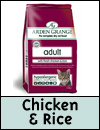 Cats differ from one to the next when it comes to the best food for them. There are a number of different factors that will affect the type of food you give them. The age of a cat is a factor as nutritional needs change during their life depending on their age. Kittens need a different diet to old cats for example. The condition of your cat is another factor to take into consideration. Overweight cats need a special diet, as do underweight cats and there is no one size fits all solution. The health history of a cat is also important as existing conditions like diabetes or other illnesses mean a very particular diet may be required. Your vet can advise you on what food would be suitable if your cat is suffering from ill health. Cost also plays a part in cat food as prices vary considerably between brands. Generally speaking, the more expensive a food, the healthier and better for your cat it will be, but budgets often cannot stretch so a cheaper food should be found.
Cats differ from one to the next when it comes to the best food for them. There are a number of different factors that will affect the type of food you give them. The age of a cat is a factor as nutritional needs change during their life depending on their age. Kittens need a different diet to old cats for example. The condition of your cat is another factor to take into consideration. Overweight cats need a special diet, as do underweight cats and there is no one size fits all solution. The health history of a cat is also important as existing conditions like diabetes or other illnesses mean a very particular diet may be required. Your vet can advise you on what food would be suitable if your cat is suffering from ill health. Cost also plays a part in cat food as prices vary considerably between brands. Generally speaking, the more expensive a food, the healthier and better for your cat it will be, but budgets often cannot stretch so a cheaper food should be found.Cats have different tastes. Whilst some cats love tuna, others may loathe it. It is a good idea to try out your cat on a variety of foods to see which they prefer. Taste preferences should not be forgotten about when it comes to selecting a cat food. Understanding cat food labels is very important when choosing a food, as clever wording can mean something that looks healthy and delicious, may in fact not be. Look closely at the ingredient list on the back of the product when choosing a food and make sure the first product listed in a high protein item such as chicken or tuna.
If you are switching to a new food, your cat may need a little time to get used to it. If they turn their nose up the first day, that doesn’t necessarily mean they won’t ever like it, so a bit of patience and perseverance is required. If your cat continues to avoid a food, it is probably time for a change, and if your cat appears to become unwell and shows signs of sickness or diarrhea it could also meant the food is not appropriate.
Do any of you have any comments about the best food for cats? Send in your thoughts and advice below.




